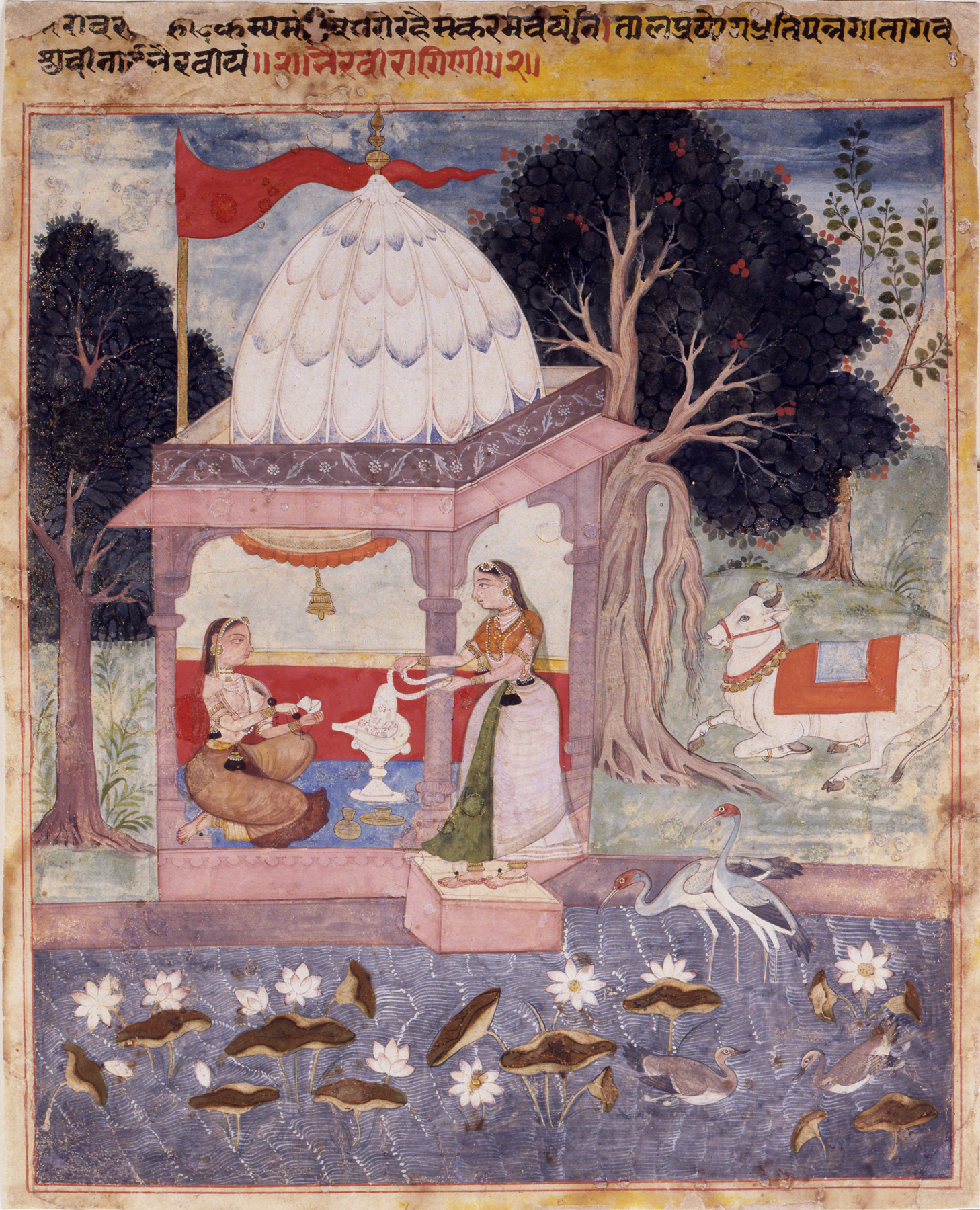Ragini Bhairavi
(India, Nepal, and Tibet)
Melodic musical themes known as modes ("raga") were important subjects in sets of miniatures produced for the regional courts of India in the 17th-19th centuries. The name of one "raga" is Bhairava- a god who is also the lord of music. Bhairavi (spouse of Bhairava) gives her name to a "raga"-variation ("ragini"). In art, she personifies the "ragini." She appears here worshiping at a shrine holding a "linga," the emblem of the great god Shiva. The inscription at top says, "The fair and pure Bhairavi worships Shiva with songs accompanied by cymbals in a crystal shrine beside a lake." A sculpture of Shiva's bull, his means of transportation, sits outside the shrine.
Inscription
Provenance
Provenance (from the French provenir, 'to come from/forth') is the chronology of the ownership, custody, or location of a historical object. Learn more about provenance at the Walters.
John and Berthe Ford, Baltimore [date and mode of acquisition unknown]; Walters Art Museum, 2001, by gift.
Exhibitions
| 2001-2003 | Desire and Devotion: Art from India, Nepal, and Tibet in the John and Berthe Ford Collection. The Walters Art Museum, Baltimore; Santa Barbara Museum of Art, Santa Barbara; Albuquerque Museum, Albuquerque; Birmingham Museum of Art, Birmingham; Hong Kong Museum of Art, Hong Kong. |
Geographies
India (Place of Origin)
Measurements
8 11/16 x 7 3/8 in. (22.07 x 18.73 cm)
Credit Line
Gift of John and Berthe Ford, 2001
Location in Museum
Not on view
Accession Number
In libraries, galleries, museums, and archives, an accession number is a unique identifier assigned to each object in the collection.
In libraries, galleries, museums, and archives, an accession number is a unique identifier assigned to each object in the collection.
W.875


